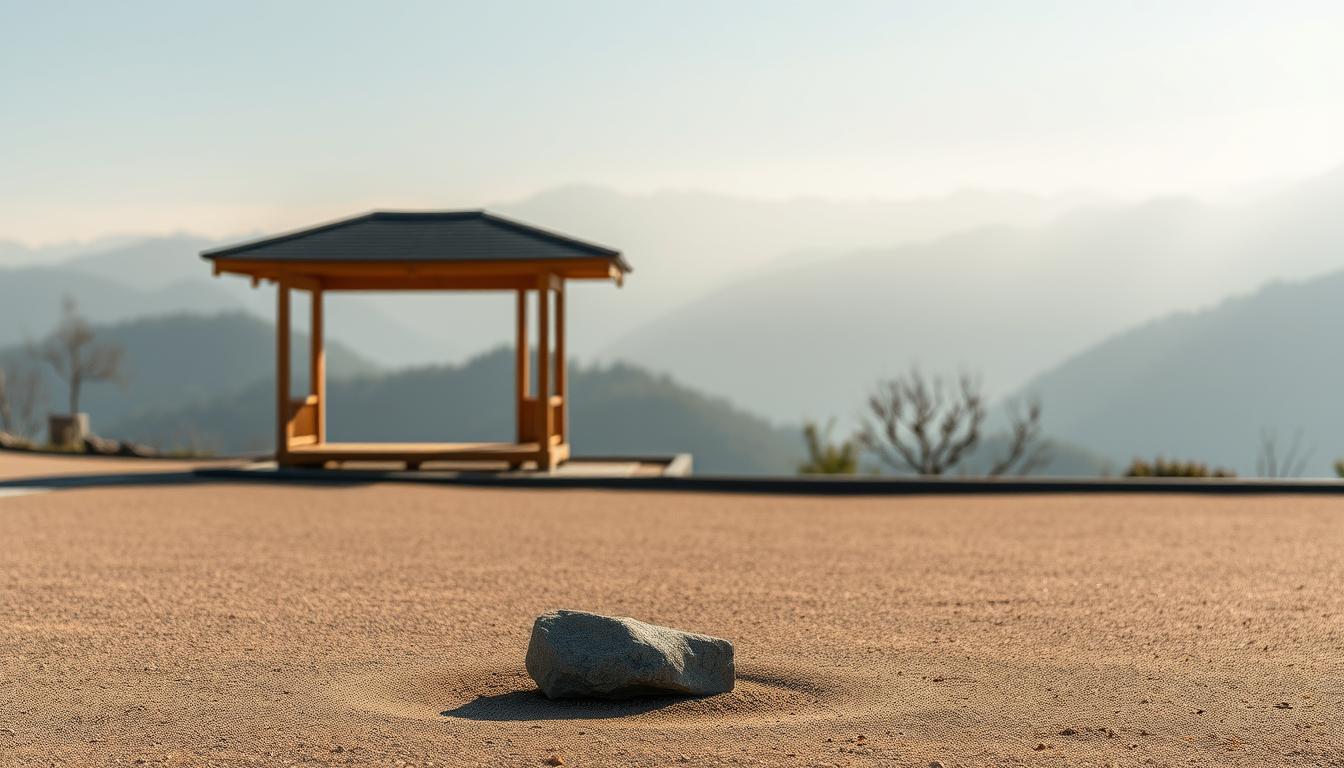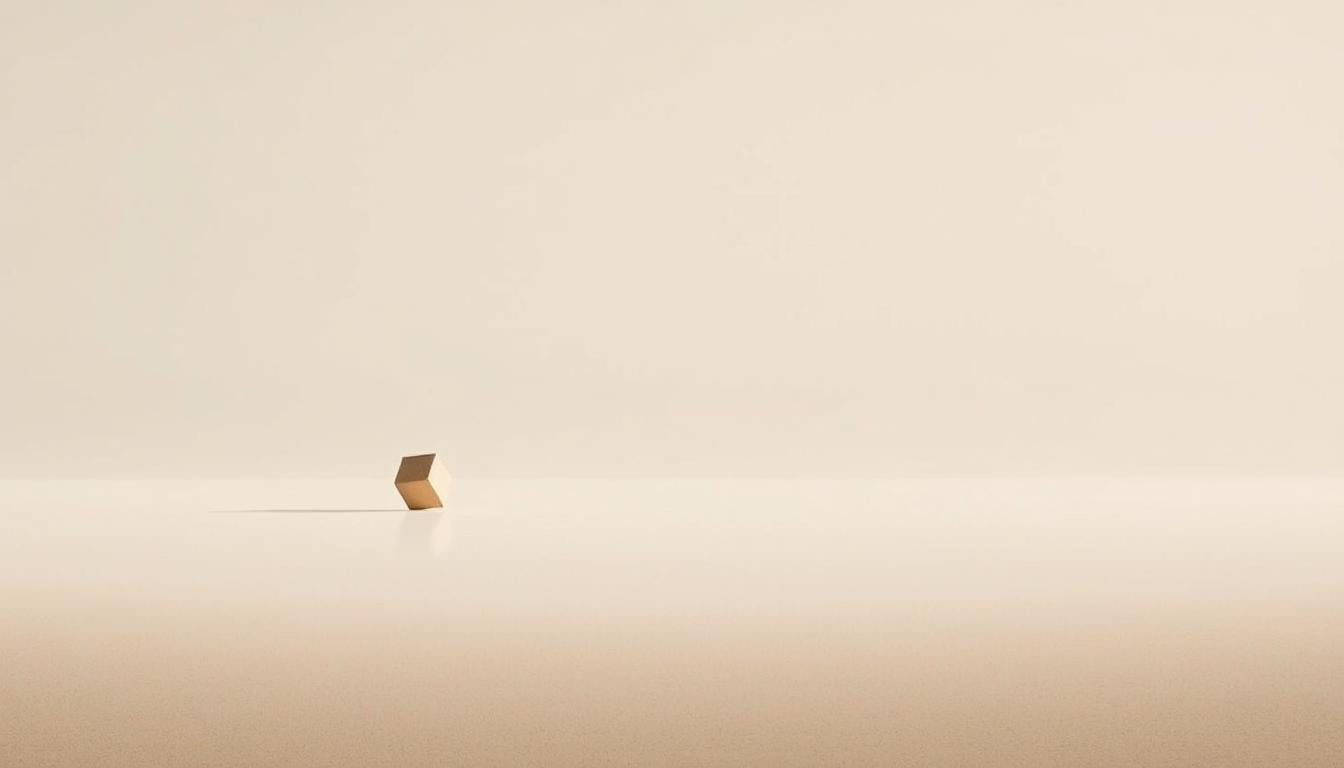Can removing more actually reveal more? This guide asks that question up front and invites you to look closer at a design approach that values restraint.
Rooted in tradition and mindful practice, this form of minimalism focuses on careful placement, negative space, and the fewer elements that carry true meaning. It blends function with calm and turns absence into a powerful visual tool.
In this Ultimate Guide we’ll explain how simplicity creates a stronger viewer experience. You will see how reduction brings the essence of a subject forward and why that matters in homes, museums, and modern design.
We’ll move from core concepts to real techniques like ink and brush and calligraphy, and show how culture and philosophy shape the sense of balance and beauty you recognize across the world.

For a deeper look at how this creative approach informs modern design, see this overview on minimalism and creative design.
Key Takeaways
- Simple choices and careful space make works feel calmer and clearer.
- Negative space (Ma) and Wabi-sabi shape the feeling of balance and beauty.
- Removing the unnecessary helps the essential elements do meaningful work.
- The approach spans painting, calligraphy, architecture, and gardens.
- Understanding the concept helps you see how design enhances the viewer’s experience.
Foundations of Japanese Minimalism: Principles, Philosophy, and Aesthetics
At the heart of this aesthetic lies a set of guiding values that shape how objects, rooms, and images breathe and speak.
Zen Buddhism gives the approach a clear ethical and practical base. Mindful practice favors direct experience over decoration. Quiet rituals and focused attention help viewers meet the work without distraction.
Ma: the eloquence of negative space
Ma uses empty space as a tool. Emptiness sets rhythm and highlights what remains. The result is pacing that guides the eye and calms the mind.
Wabi-sabi and imperfection
Wabi-sabi honors age, wear, and asymmetry. It reframes beauty as a living process. Impermanence becomes an asset, not a flaw.
Reduction, form, and function
Reduction strips details until the essence remains. Each line and surface must serve purpose. When form and function align, compositions feel balanced and intentional.
| Principle | Meaning | Example |
|---|---|---|
| Zen influence | Mindful simplicity | Meditative calligraphy |
| Ma | Purposeful empty space | Sparse room layouts |
| Wabi-sabi | Beauty in imperfection | Weathered wood, uneven glaze |
| Reduction | Essence over excess | Single-stem ikebana |
- This framework grew from tradition and close ties to nature.
- It guides makers across painting, design, and gardens toward lasting harmony.
Japanese minimalist art in practice: media, materials, and the art of restraint
Hands, brushes, and empty space combine in practice to make intention visible. This section looks at common media and how simple choices shape meaning. Each method shows how restraint helps the subject and the viewer connect.

Ink wash painting (sumi-e): lines, tone, and the economy of brushwork
Sumi-e uses black ink and a few deliberate strokes to capture an object's essence.
Paper absorbency, brush pressure, and the direction of lines decide what remains. The goal is that the viewer feels the subject without extra detail.
Calligraphy as contemplation: movement, rhythm, and the beauty of form
Calligraphy blends movement and contemplation. The rhythm of the brush makes each mark a live gesture.
Legible, simple forms convey a direct experience and reveal the maker's timing and intent.
Ikebana: minimal composition where each element takes center stage
Ikebana arranges stems and leaves so each element has purpose. Asymmetry and clean lines elevate single stems.
Surrounding space becomes part of the composition, making every placement matter.
Zen gardens: staged landscapes of gravel, rock, and serene balance
Gravel, rock, and sparse vegetation form a quiet scene built around emptiness.
The staged layout invites slow looking and steady breathing, using space as a compositional tool.
Staging the work: why simplicity lets the subject and essence shine
Across media, practical choices—paper, brush, pressure, and placement—support the larger concept of reduction.
Artists decide what to remove and what to keep so every mark earns its place. For more on how pared-back pieces inform modern design, see these minimalist canvas designs.
From galleries to life: Japanese minimalism’s influence on design today
From showrooms to smartphones, the less-is-more ethos reshapes how design stages daily life. This influence moves from gallery thinking into homes, wardrobes, and interfaces. It favors clarity, honest materials, and purposeful choices.

Interior and furniture design: clarity, function, and understated elegance
In interiors, open layouts, natural light, and quiet color let objects breathe. Furniture focuses on form and function with simple lines and honest wood or stone. Brands like Muji show how usability and restraint create calm daily routines.
Fashion, product, and architecture: clean lines, limited palettes, and timeless restraint
Fashion and products use limited palettes and precise proportions so pieces feel timeless. Automakers apply the same idea with smooth silhouettes and minimal visual interruptions. In architecture, wood, light, and view-driven plans link nature and culture to living spaces.
Digital experiences: content-first minimal web design, visual hierarchy, and white space
On the web, minimal layouts put content center stage. Strong hierarchy, generous white space, simple navigation, and clear type guide attention. Older information-dense sites are evolving as younger users prefer cleaner, UX-first patterns.
- Influence travels across centuries into modern work.
- Careful use of color and type keeps the essential elements in the center stage.
Conclusion
Conclusion
When reduction is used with purpose, everyday objects, rooms, and screens gain a quieter, clearer voice.
Minimalism clarifies intent: empty space becomes focus, and each element must earn its place. That idea carries from centuries of tradition into interior, product, and architecture choices today.
Use limited elements, honest materials, and clear hierarchy to make work feel balanced and humane. Emptiness is not absence but a tool that points attention to the subject and invites a calmer experience.
For practical ways to bring this approach into your home and projects, see our guide to home design. Carry these principles into life and your work: purpose yields harmony, and restraint creates lasting beauty.
Enhance Your Space with Unique Modern Masterpieces by Chiara Rossetti
Are you inspired by the innovative mediums and conceptual depth highlighted in our exploration of contemporary art? You’re not alone! Today’s art enthusiasts are seeking cultural relevance and emotional connections in their artwork. However, finding pieces that resonate with modern themes and fit your unique style can be a challenge. That’s where we come in!
At Rossetti Art, we specialize in canvas prints, original paintings, and modern sculptures that celebrate the spirit of now. Each piece created by Chiara Rossetti brings a personal touch that connects deeply with current social narratives—just like the modern masterpieces discussed in the article. Don’t miss out on the chance to elevate your home decor with breathtaking artwork that speaks to your values and aesthetic. Explore our collection today and find your perfect piece! Act now, and transform your space into a gallery of inspiration!
FAQ
What are the core principles behind exploring the simplicity of Japanese minimalist art?
The core principles focus on reduction, balance, and purposeful use of space. Influences like Zen Buddhism and wabi-sabi shape a practice that values imperfection, impermanence, and quiet elegance. Artists and designers strip away excess to reveal form, function, and the essence of a subject, often using natural materials and muted palettes to heighten contemplation.
How does Zen Buddhism influence mindful simplicity in paintings and design?
Zen promotes presence, restraint, and a focus on the moment. In visual work that means sparse compositions, slow deliberate brushwork, and an emphasis on silence or emptiness—helping viewers experience the piece rather than simply observe it. This approach informs architecture, furniture, and everyday objects to encourage calm and clarity.
What is ma and why is negative space important?
Ma is the intentional use of empty space to shape meaning. Negative space acts like a stage: it frames elements, controls rhythm, and guides attention. When used well, voids become active parts of a composition, letting simple forms breathe and revealing relationships between lines, materials, and the surrounding environment.
How does wabi-sabi appear in contemporary practice?
Wabi-sabi shows up as weathered finishes, asymmetry, and materials that age gracefully. Designers and artists select surfaces and objects that reveal traces of time—wood grain, hand-applied ink, or imperfect pottery—to celebrate authenticity and the beauty of natural processes rather than polished perfection.
In what ways do reduction and essentialism guide the creative process?
Reduction means cutting away nonessential parts until only the necessary elements remain. Artists test each line, object, or color for purpose. This discipline produces work where every choice—scale, placement, texture—serves a function, creating clarity and strong emotional resonance with minimal means.
How do form and function achieve harmony in this aesthetic?
Harmony comes from aligning visual choices with practical purpose. Furniture, interiors, and stage settings favor simple construction and honest materials so that beauty emerges from utility. Clean profiles, efficient layouts, and thoughtful details let objects serve daily life while remaining visually calm and elegant.
What traditional influences shape this style across centuries?
Longstanding cultural practices—tea ceremony, calligraphy, ink wash painting, and garden design—have all informed the approach. These traditions emphasize ritual, material truth, and a close relationship with nature, passing principles like restraint, proportion, and seasonal awareness through generations of makers.
How does sumi-e (ink wash painting) demonstrate the economy of brushwork?
Sumi-e uses few strokes to suggest form, capturing essence rather than detail. Variations in pressure, tone, and rhythm create depth and motion. The technique trains artists to value timing and confidence: a single mark can convey atmosphere, texture, and emotional weight.
Why is calligraphy considered a contemplative art?
Calligraphy combines movement, breath, and timing. Each stroke reflects the maker’s state of mind, making the act itself meditative. The resulting forms balance negative space and contrast, offering visual poetry that communicates presence and discipline.
What role does ikebana play in minimal composition?
Ikebana arranges flowers and branches with severe simplicity so each component has purpose. Line, proportion, and seasonal choice become primary. The practice trains the eye to see relationships and to appreciate restraint, where emptiness around elements underscores their importance.
How do Zen gardens stage landscapes with minimal materials?
Zen gardens use gravel, rocks, and sparse planting to imply landscapes and movement. Raked gravel suggests water; stone placements evoke mountains. The pared-back palette and deliberate composition create a contemplative setting where viewers can project meaning and find calm.
What does “staging the work” mean in this context?
Staging means arranging elements so the subject and essence take center stage. Lighting, negative space, and positioning are tuned to highlight a single form or idea. Minimal staging reduces clutter and gives viewers a clear path to experience the work’s intention.
How has this aesthetic influenced modern interiors and furniture design?
Contemporary interiors borrow clarity, function, and subtle elegance—favoring uncluttered layouts, modular furniture, and natural surfaces. Designers like Naoto Fukasawa and brands such as Muji emphasize simplicity and usefulness, creating spaces that feel calm and purposeful.
How is the approach applied in fashion, product, and architecture?
The approach favors clean lines, limited palettes, and enduring forms. In fashion, it appears as refined tailoring and neutral tones. Product design prioritizes intuitive use; architecture emphasizes light, proportion, and restrained materials to craft timeless, human-centered spaces.
What makes minimal design effective in digital experiences?
Digital minimalism centers content with clear hierarchy, generous white space, and purposeful typography. It reduces cognitive load so users focus on essential actions. This leads to cleaner interfaces, faster comprehension, and stronger visual communication across screens.
How can someone bring these principles into everyday life?
Start small: clear a surface, choose one meaningful object, and edit belongings with function and joy in mind. Embrace natural materials, limit color palettes, and arrange items so they can breathe. These changes encourage calm, better use of space, and longer-lasting choices.







Leave a comment
This site is protected by hCaptcha and the hCaptcha Privacy Policy and Terms of Service apply.